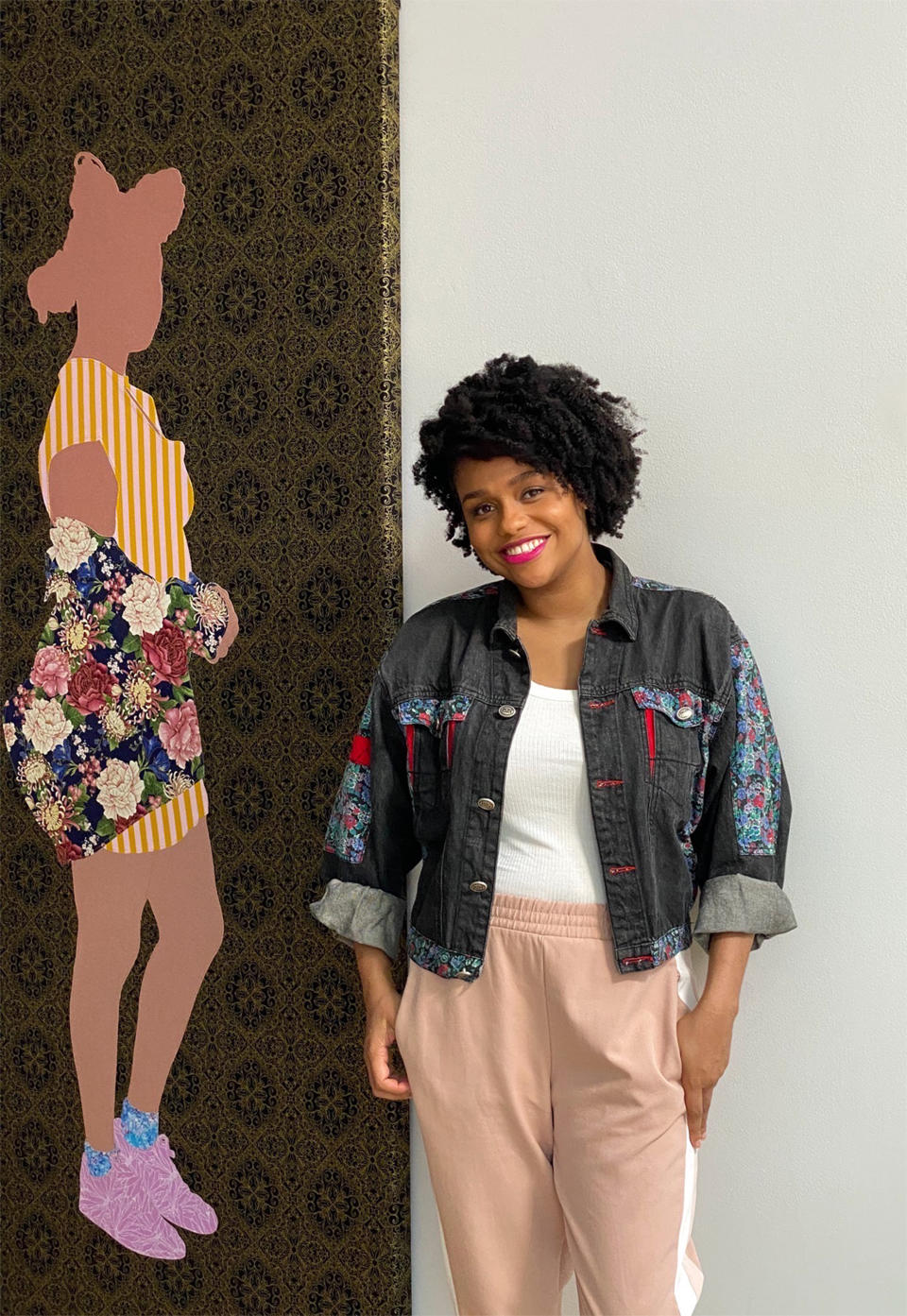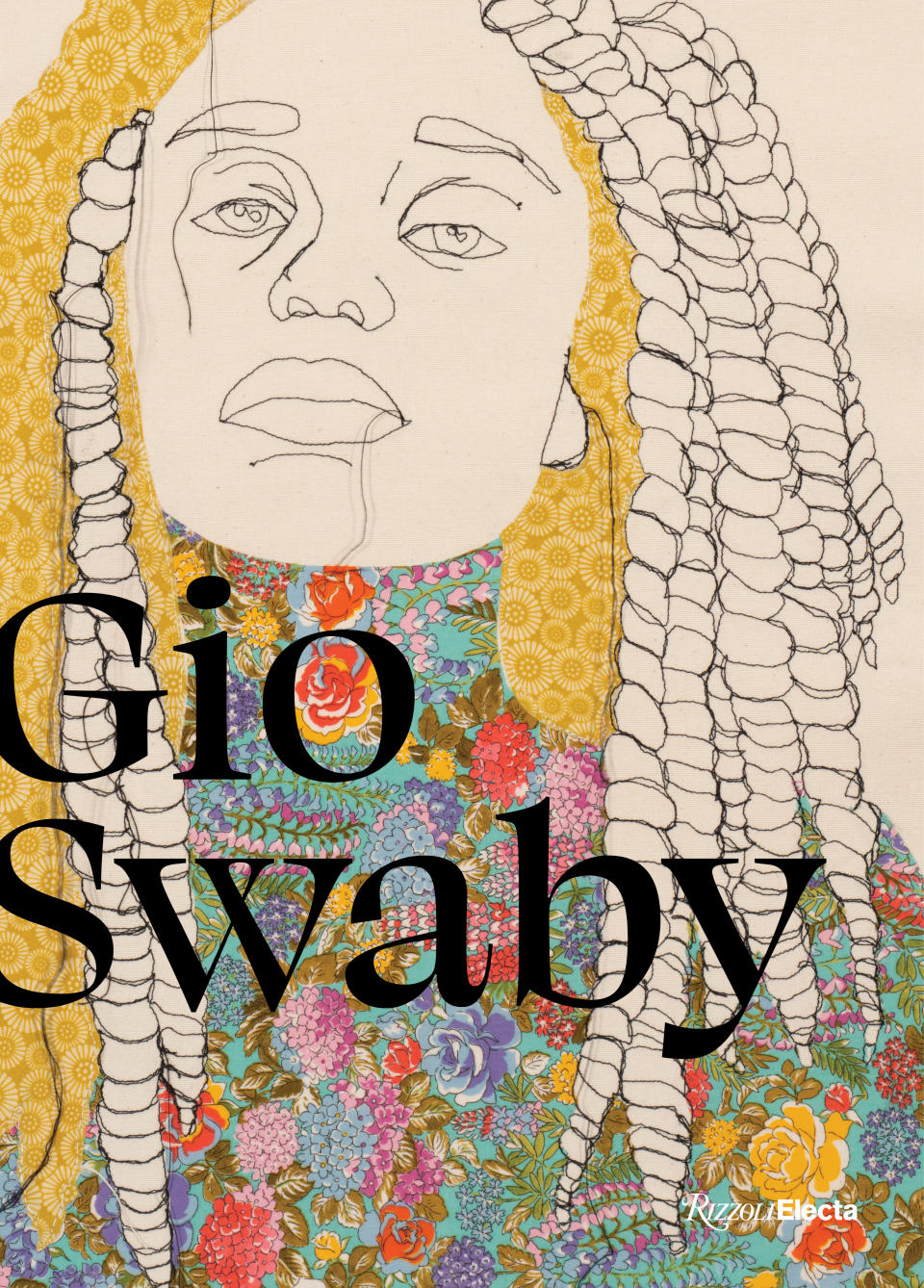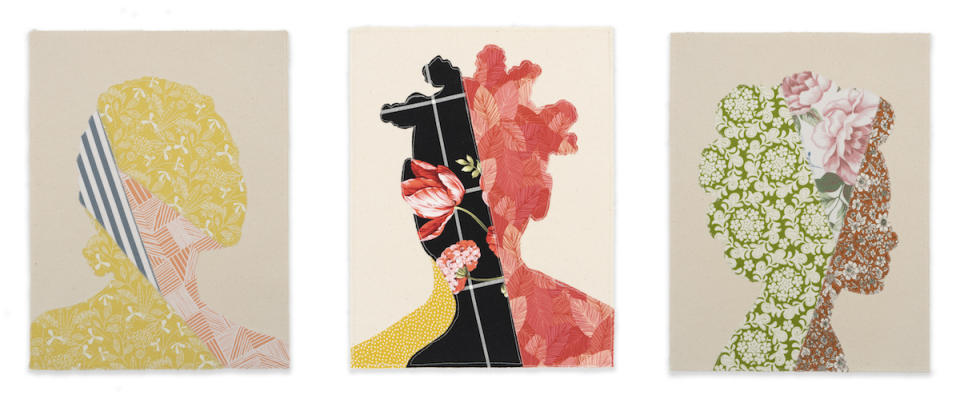Textiles, Triumphs and Love Letters to Black Women: Gio Swaby’s Solo Museum Debut

Gio Swaby wants Black women to take up space in the art world — more than they ever have.
The 30-year-old Bahamian artist, whose solo museum debut opened at The Museum of Fine Arts, St. Petersburg on Saturday, accompanied by a coffee table book courtesy of Rizzoli, is using textiles to express the multifaceted fabric of Black women.
More from WWD
With portraits sewn and quilted onto canvas, which in some cases will take up as much as seven feet of gallery wall space, Swaby, on a mission herself to “unlearn” what much of the world has taught Black women to believe about themselves, wants to counter narratives of trauma and supplant them with those of joy. And, even more literally, she wants to fill the walls of long white-dominated spaces with the very images of those who haven’t been invited into the long-exclusionary art world.
“So much of my work is about accessibility and is about welcoming people who have been unwelcome in the past, making space for them in institutions that are often really intimidating for no reason at all. To help to break some of that down,” she said. “I want to just create spaces where we can be ourselves, where we can be fully nuanced, complex as we want to be, contradictory — which is a part of the human experience. The space to be loved, to be honored and to be able to experience joy, to be able to experience safety and comfort.
“This is what I’m trying to create with my work and that’s specifically for Black people. I’m not concerned with shifting any kind of presentation of us for the white gaze.”

Courtesy of Claire Oliver Gallery
Alive with the colors of the Caribbean and bold floral or geometric patterns, Swaby’s portraits, “love letters” to Black women, as she considers them, feature world-sourced fabrics that bring to life the women she captures — their hair, their shapes, their energies. Sometimes the depictions are of herself and, often, of close friends and family.
But more than a visual representation, the artist works to capture the subject’s essence, beginning with a conversational photoshoot of sorts that kicks off the process once they’ve accepted her invitation to be reflected as art.
“I call it more of a conversation because I’m asking questions but we’re sharing back and forth about our experiences,” Swaby says. “I ask them to choose their own outfits because this work is a celebration of them, really. I want them to come and be just as they are and present themselves in a way that they feel best.”
From there the artist and subject together select an image from the shoot that best reflects the individual and Swaby begins the work on a sit-down quilting machine, stitching the image onto canvas. What she displays in the end is the seemingly less refined underside of the stitching, instead of what would have traditionally been the “top.”
Then, as with a quilt, Swaby appliqués the fabric onto the portrait, in some cases filling the subject’s entire profile while in others placing it just for the clothing and leaving their faces as purely outlined stitches on the canvas.
“The way that I choose which fabrics I’ll use for the portrait is really rooted in the conversation that I had with the person before,” she says. “Sometimes they tell me about perhaps a certain experience they’ve had before with a certain pattern or motif or one person told me a story about how they used going to the beach as a way to disconnect and go into themselves and have time to reflect and just a space for peace. So I used the colors of the ocean as part of their portrait to represent them.”
While she’s reflecting subjects dear to her and “immortalizing” a moment they shared, Swaby says the ultimate aim is much bigger than that.
“An important aspect of why I make the kind of work I make is not just for the actual women represented in these portraits to see themselves, but for people to come in and see reflections of themselves,” she says. “Sometimes Black women and girls will see this work and see a version of themselves represented or someone they love, their mother, aunt, sister. So that is such a huge part of it, that the work continues to be seen and shared.”

Courtesy of Rizzoli USA
American journalist Nikole Hannah-Jones who, in an interview opening the “Gio Swaby” titled coffee table book released in April, wrote of the effect: “Gio’s chosen subjects, whether rendered in silhouette or outline, evoke the women who nurtured me, who befriended me, who surround me still. Gio’s work evokes at once awe and comfort, complexity in a misleadingly simple form. It is approachable even as you must pause and admire the sheer artistry, grace, and skill that created it.”
Coming off the heels of her 2021 debut exhibit, “Both Sides of the Sun” at Claire Oliver Gallery in Harlem, which sold out before it opened, Swaby’s “Fresh Up” — which runs at the St. Petersburg Museum of Fine Arts through Oct. 9 — is expected to enjoy similar success.
So named for the Bahamian phrase “fresh up,” expressing the energy that can surround someone when they’re dressed up or their essence is aglow, the exhibit will likely give museum visitors a similar vibe.
“So much of my work is about celebrating and exploring personal style. I felt like this work is so celebratory I want this to feel really joyful and I felt like being ‘fresh up’ was such a concise way to pack all of that in,” Swaby says.
What will be most rewarding — beyond a chance to return home to the Bahamas from her current residence in Toronto and catching up on some much-missed TV following the years-long work that went into the exhibit — according to the artist, is what her primary audience feels when they view it.
“I’m especially thinking about Black women, Black femmes, Black girls coming to see this work,” she says. “I hope they can see moments of themselves reflected. I want them to look at this work created with so much love, with so much reverence, with so much care and understand that it’s dedicated to them.”

Courtesy of Rizzoli USA
Best of WWD
Sign up for WWD's Newsletter. For the latest news, follow us on Twitter, Facebook, and Instagram.

 Yahoo Movies
Yahoo Movies 